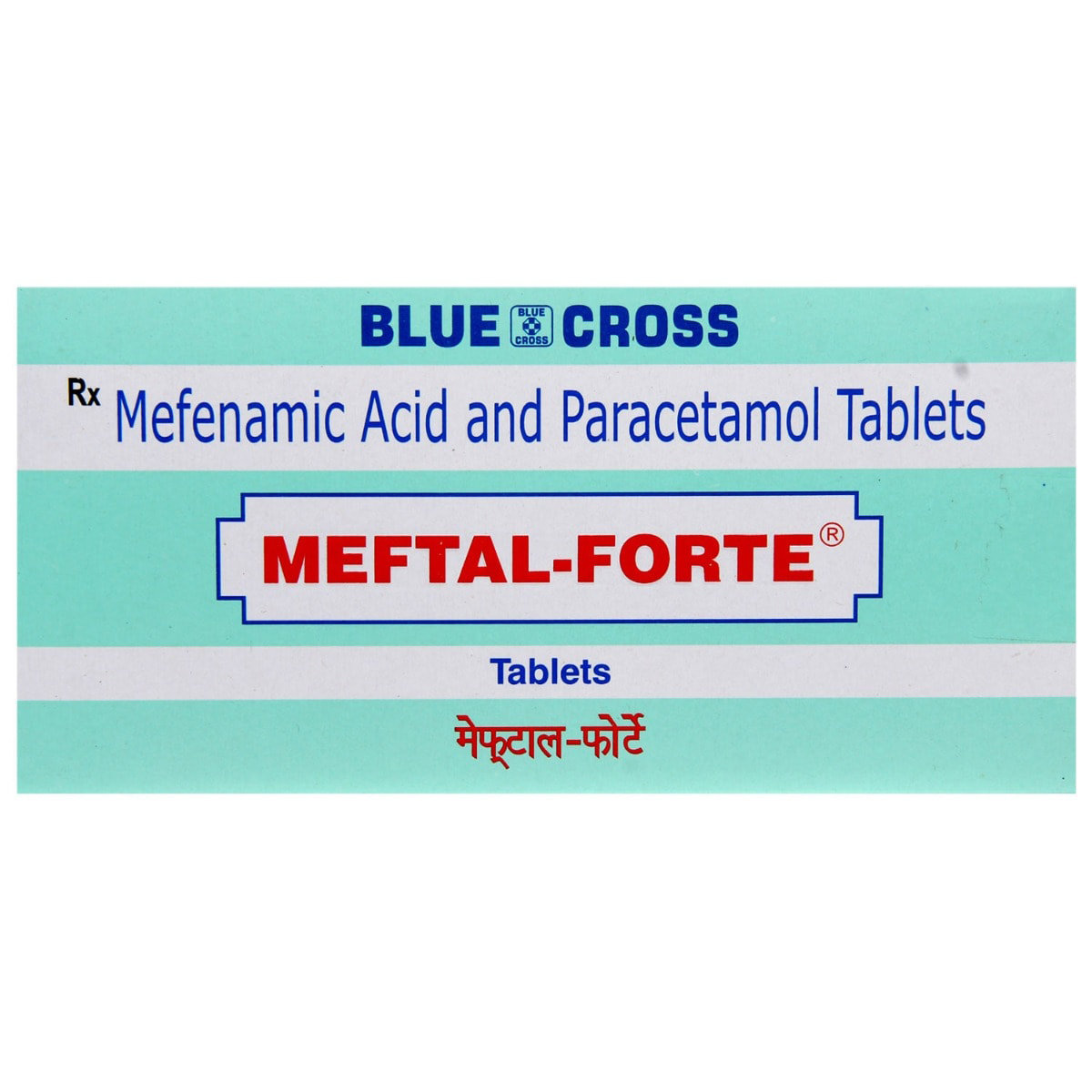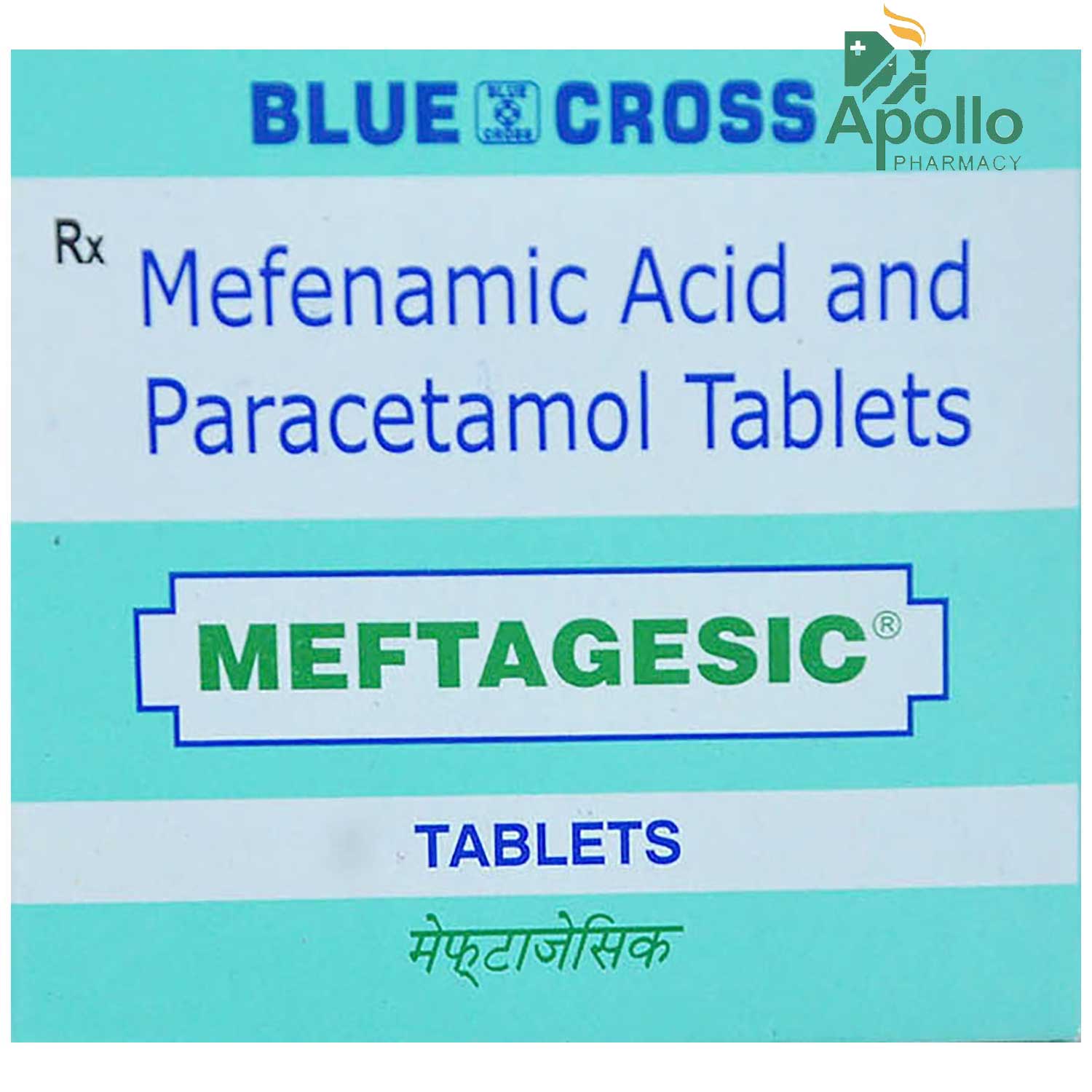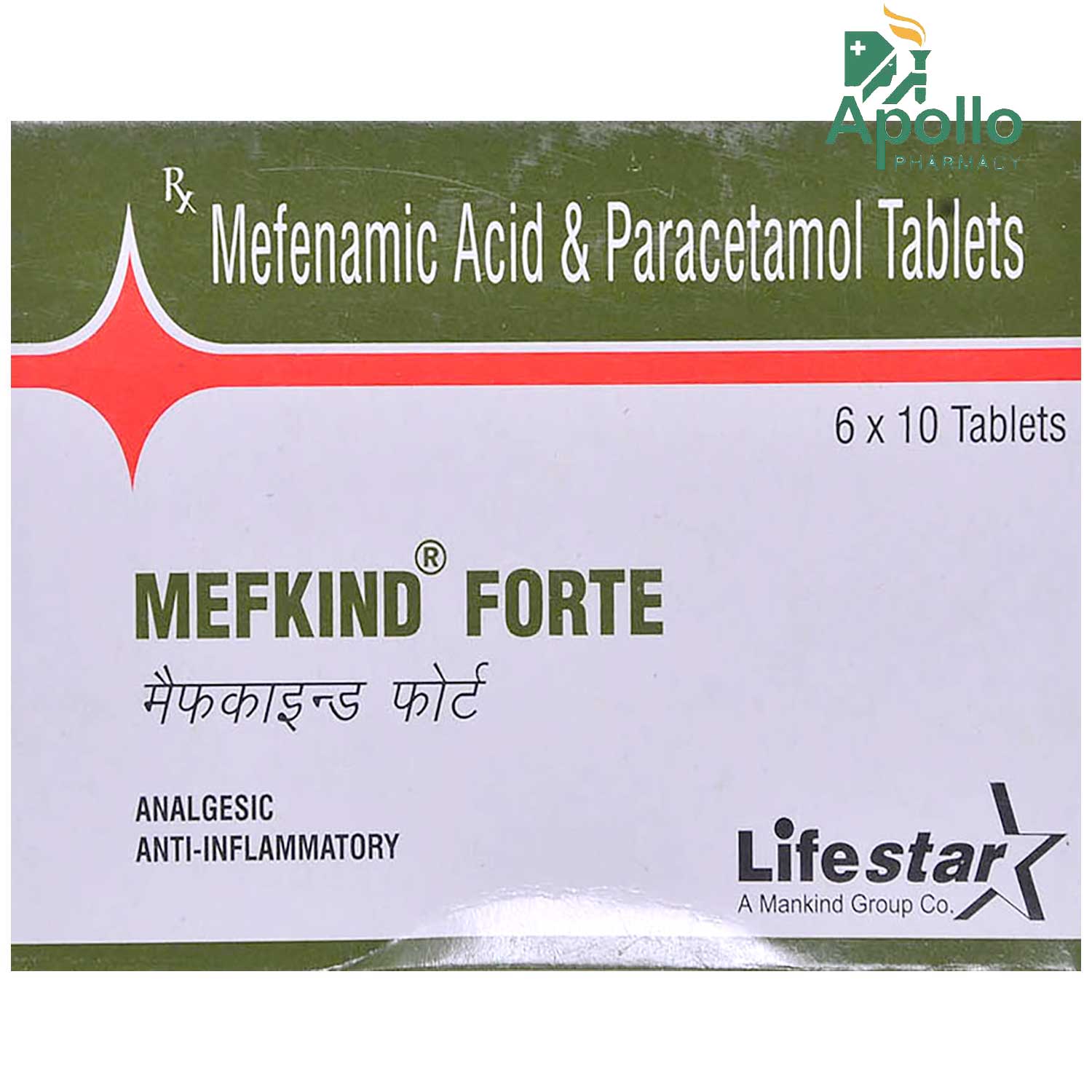Emfort Tablet


MRP ₹48.5
(Inclusive of all Taxes)
₹7.3 Cashback (15%)
Provide Delivery Location
Online payment accepted
 Prescription drug
Prescription drugWhats That
Composition :
Manufacturer/Marketer :
Consume Type :
Return Policy :
About Emfort Tablet
Emfort Tablet belongs to a group of medicines called Non-Steroidal Anti-Inflammatory Drugs (NSAIDs) used for the treatment of pain, inflammation, migraine headache, period pain, heavy bleeding during periods, muscle pain, tooth pain, joint pain, pain after surgery, ear pain, fever, flu, osteoarthritis, and rheumatoid arthritis. Pain is a symptom triggered by the nervous system, causing uncomfortable sensations in the body.
Emfort Tablet contains two drugs, Mefenamic acid and Paracetamol. Emfort Tablet blocks the effect of a chemical messenger known as cyclo-oxygenase (COX) enzyme that makes other chemical prostaglandins. By blocking the effect of COX enzymes, lesser prostaglandins are produced. This helps reduce mild to moderate pain and inflammation at the injured or damaged site.
You are advised to take Emfort Tablet for as long as your doctor has prescribed it for you, depending on your medical condition. In some cases, Emfort Tablet may cause common side effects such as nausea, vomiting, indigestion, heartburn, and diarrhoea. Most of these side effects do not require medical attention and will resolve gradually over time. However, you are advised to talk to your doctor if you experience these side effects persistently.
Consult your doctor if you are pregnant or breastfeeding. Emfort Tablet may cause dizziness, so drive only if you are alert. Avoid consuming alcohol with Emfort Tablet as it could lead to increased dizziness and may increase the risk of stomach bleeding. Keep your doctor informed about your health condition and medicines to rule out any side effects/interactions.
Uses of Emfort Tablet
Directions for Use
Key Benefits
Emfort Tablet contains two Non-Steroidal Anti-Inflammatory Drugs (NSAIDs), Mefenamic acid and Paracetamol. Emfort Tablet is used to treat pain, inflammation, migraine headache, period pain, heavy bleeding during periods, muscle pain, tooth pain, joint pain, pain after surgery, ear pain, fever, flu, osteoarthritis, and rheumatoid arthritis. Emfort Tablet blocks the effect of a chemical messenger known as cyclo-oxygenase (COX) enzyme that makes another chemical, prostaglandin. Prostaglandins are produced at injury sites and cause pain and swelling. By blocking the effect of COX enzymes, lesser prostaglandins are produced. This helps reduce mild to moderate pain and inflammation at the injured or damaged site.
Storage
- Do not consume spicy foods, caffeine, and alcohol.
- Choose low-acid fruits and vegetables like apples, melons, and carrots.
- Include whole grains like whole-wheat bread, oatmeal, and brown rice.
- Limit processed meats like hotdogs and sausages.
- Avoid fatty, spicy, or acidic salad dressings.
- Limit tomatoes and tomato-based products.
- Quit smoking to promote ulcer healing.
- Adopt a balanced diet and lifestyle to reduce the risk of peptic ulcers.
- Inform your doctor about the nausea and discuss possible alternatives to the medication or adjustments to the dosage.
- Divide your daily food intake into smaller, more frequent meals to reduce nausea.
- Opt for bland, easily digestible foods like crackers, toast, plain rice, bananas, and applesauce.
- Avoid certain foods that can trigger nausea, such as fatty, greasy, spicy, and smelly foods.
- Drink plenty of fluids, such as water, clear broth, or electrolyte-rich beverages like coconut water or sports drinks.
- Use ginger (tea, ale, or candies) to help relieve nausea.
- Get adequate rest and also avoid strenuous activities that can worsen nausea.
- Talk to your doctor about taking anti-nausea medication if your nausea is severe.
- Record when your nausea occurs, what triggers it, and what provides relief to help you identify patterns and manage your symptoms more effectively.
- Preventing Vomiting (Before it Happens)
- Take medication exactly as prescribed by your doctor. This can help minimize side effects, including vomiting.
- Having a small meal before taking your medication can help reduce nausea and vomiting.
- Talk to your doctor about taking anti-nausea medication along with your prescribed medication.
- Managing Vomiting (If it Happens)
- Try taking ginger in the form of tea, ale, or candy to help alleviate nausea and vomiting.
- What to Do if Vomiting Persists
- Consult your doctor if vomiting continues or worsens, consult the doctor for guidance on adjusting your medication or additional treatment.
- Inform Your Doctor: Notify your doctor immediately about your diarrhoea symptoms. This allows them to adjust your medication or provide guidance on managing side effects.
- Stay Hydrated: Drink plenty of fluids to replace lost water and electrolytes. Choose water, clear broth, and electrolyte-rich drinks. Avoid carbonated or caffeinated beverages to effectively rehydrate your body.
- Follow a Bland Diet: Eat easy-to-digest foods to help firm up your stool and settle your stomach. Try incorporating bananas, rice, applesauce, toast, plain crackers, and boiled vegetables into your diet.
- Avoid Trigger Foods: Steer clear of foods that can worsen diarrhoea, such as spicy, fatty, or greasy foods, high-fibre foods, and dairy products (especially if you're lactose intolerant).
- Practice Good Hygiene: Maintain good hygiene to prevent the spread of infection. To stay healthy, wash your hands frequently, clean and disinfect surfaces regularly, and avoid exchanging personal belongings with others.
- Take Anti-Diarrheal Medications: If your doctor advises, anti-diarrheal medications such as loperamide might help manage diarrhoea symptoms. Always follow your doctor's directions.
- Keep track of your diarrhoea symptoms. If they don't get better or worse or are accompanied by severe stomach pain, blood, or dehydration signs (like extreme thirst or dark urine), seek medical help.
- Tell your doctor about your GAS symptoms. They may change your medication regimen or prescribe additional drugs to help you manage them.
- To manage GAS symptoms, eat a balanced diet of fibre, vegetables, and fruits.
- Drink enough water throughout the day to avoid constipation and treat GAS symptoms.
- Regular exercise like yoga and walking may help stimulate digestion and alleviate GAS symptoms.
- Take probiotics only if your doctor advises, as they may help alleviate GAS symptoms by promoting gut health.
- Take medication for GAS symptoms only if your doctor advises, as certain medications can interact with your existing prescriptions or worsen symptoms.
- If symptoms persist, worsen, or are accompanied by severe abdominal pain, vomiting, or bleeding, seek immediate medical attention.
- Inform your doctor about your constipation symptoms. They may adjust your medication or advise alternative treatments.
- Stay hydrated by drinking sufficient of water (at least 8-10 glasses a day) to help soften stool and promote bowel movements.
- Increase fibre intake by eating foods high in fibre, such as fruits, whole grains, vegetables and legumes, to help bulk up the stool.
- Establish a bowel routine by trying to go to the bathroom at the same time each day to train your bowels.
- Engaging in regular exercise, like walking or yoga, can support in bowel movement stimulation.
- Consult your doctor if constipation persists, and discuss alternative treatments or adjustments to your medication.
Drug Warnings
Do not take Emfort Tablet if you are allergic to any of its contents; if you have severe heart, kidney or liver failure; or if you have suffered bleeding problems such as bleeding from the stomach or bowels while taking painkillers or if you have peptic ulcers or inflammatory bowel disease. Inform your doctor if you have high blood pressure, heart problems, high cholesterol, dehydration, asthma, gastrointestinal bleeding, ulceration, perforation of the stomach and intestine, or liver and kidney problems. Consult your doctor if you are pregnant or breastfeeding. Emfort Tablet may cause dizziness, so drive only if you are alert. Stop taking Emfort Tablet and consult your doctor immediately if you have stomach pain or any signs of bleeding in the intestine or stomach, such as blood in stools. Do not take any other NSAIDs for pain relief along with Emfort Tablet unless prescribed by the doctor.
Drug-Drug Interactions
Drug-Drug Interactions
Login/Sign Up
Coadministration of Emfort Tablet with Ketorolac can increase the risk or severity of gastric bleeding and ulcers.
How to manage the interaction:
Taking Emfort Tablet with Ketorolac together can result in an interaction, it can be taken if your doctor has advised it. However, if you notice any unusual bleeding or bruising, other signs of bleeding, dizziness, lightheadedness, red or black tarry stools, coughing up or vomiting blood, severe headache, and weakness, you should contact a doctor immediately. Do not stop using any medications without talking to a doctor.
Co-administration of Emfort Tablet with Meloxicam together can increase the risk or severity of bleeding.
How to manage the interaction:
Taking Emfort Tablet with Meloxicam together is generally avoided as it can result in an interaction, it can be taken if a doctor has advised it. However, if you notice any unusual bleeding or bruising, other signs of bleeding, dizziness, lightheadedness, red or black tarry stools, coughing up or vomiting blood, severe headache, and weakness, you should contact a doctor immediately. Do not stop using any medications without talking a doctor.
Co-administration of Emfort Tablet with Flurbiprofen can increase the risk or severity of gastric bleeding, ulceration, and rarely, perforation leading to serious blood loss.
How to manage the interaction:
Taking Emfort Tablet with Flurbiprofen together can result in an interaction, it can be taken if your doctor has advised it. However, if you notice any symptoms of dizziness, lightheadedness, unusual bleeding or bruising, red or black tarry stools, coughing up or vomiting blood, severe headache, and weakness, you should contact a doctor immediately. Do not stop using any medications without talking to a doctor.
Taking Human immunoglobulin with Emfort Tablet, may raise the risk of kidney problems.
How to manage the interaction:
There may be a possibility of interaction between Human immunoglobulin and Emfort Tablet, but it can be taken if prescribed by a doctor. However, if you experience nausea, vomiting, loss of appetite, increased or decreased urination, sudden weight gain or loss, fluid retention, swelling, shortness of breath, muscle cramps, tiredness, weakness, dizziness, confusion, or an irregular heart rhythm, consult a doctor. Do not discontinue any medications without consulting a doctor.
Teriflunomide may cause liver damage and taking it with Emfort Tablet may increase that risk.
How to manage the interaction:
Although taking Emfort Tablet and Teriflunomide together can cause an interaction, it can be taken if your doctor has suggested it. If you have any of these symptoms, it's important to contact your doctor right away - liver problems, fever, feeling cold, pain in your joints, swelling, bruises, rash, itchy skin, not feeling hungry, feeling tired, feeling sick, throwing up, dark urine, or bleeding. Do not discontinue any medications without consulting a doctor.
Coadministration of Emfort Tablet with Deferasirox can increase the risk or severity of gastric bleeding.
How to manage the interaction:
Taking Emfort Tablet with Deferasirox together can result in an interaction, it can be taken if your doctor has advised it. However, if you notice any symptoms of increased or decreased urination, fluid retention, swelling, shortness of breath, muscle cramps, tiredness, weakness, dizziness, confusion, and irregular heart rhythm, you should contact a doctor immediately. Do not stop using any medications without talking to a doctor.
The combined use of Emfort Tablet and Tenofovir alafenamide can increase the risk of kidney problems.
How to manage the interaction:
Taking Emfort Tablet and Tenofovir alafenamide together can lead to an interaction, it can be taken if advised by your doctor. However, if you experience any symptoms like nausea, vomiting, loss of appetite, increased or decreased urination, sudden weight gain or weight loss, fluid retention, swelling, shortness of breath, bone pain, muscle cramps, tiredness, weakness, dizziness, confusion, and irregular heart rhythm, contact a doctor immediately. Do not discontinue any medications without consulting a doctor.
Co-administration of Emfort Tablet with Ibrutinib can increase the risk or severity of bleeding, leading to serious blood loss.
How to manage the interaction:
Taking Emfort Tablet with Ibrutinib together can result in an interaction, it can be taken if a doctor has advised it. However, if you notice any symptoms of unusual bleeding or bruising, dizziness, lightheadedness, red or black tarry stools, coughing up or vomiting blood, severe headache, and weakness, you should contact a doctor immediately. Do not stop using any medications without talking to a doctor.
Coadministration of Emfort Tablet with Dabigatran can increase the risk or severity of bleeding leading to serious blood loss.
How to manage the interaction:
Taking Emfort Tablet with Dabigatran etexilate together can result in an interaction, it can be taken if your doctor has advised it. However, if you notice any unusual bleeding or bruising, other signs of bleeding, dizziness, lightheadedness, red or black tarry stools, coughing up or vomiting blood, severe headache, and weakness, you should contact a doctor immediately. Do not stop using any medications without talking to a doctor.
Coadministration of Emfort Tablet with Methotrexate may increase the blood levels and side effects of methotrexate.
How to manage the interaction:
Although there is a possible interaction between Emfort Tablet and methotrexate, you can take these medicines together if prescribed by your doctor. However, if you experience any symptoms such as nausea, vomiting, diarrhea, rash, appetite loss, joint pain or swelling, yellowing of the skin or eyes, dark urine, breathing difficulty, a dry cough, dizziness or fainting, unusual bruising or bleeding, seizures(fits), mouth sores or ulcers, infection, as well as flu-like symptoms(fever, chills, body pains, sore throat, and weakening of the muscles), consult a doctor immediately. Do not stop using medications without a doctor's advice.
Drug-Food Interactions
Drug-Food Interactions
Login/Sign Up
Diet & Lifestyle Advise
- Physical activity helps strengthen muscles and relieves joint stiffness. Gentle activities like 20-30 minutes of walking or swimming would be helpful.
- Performing yoga may also help in improving joint flexibility and pain management.
- Maintain a healthy weight by performing regular low-strain exercises and eating healthy food.
- Get adequate sleep, as resting the muscles can help reduce inflammation and swelling.
- De-stress yourself by meditating, reading books, taking a warm bubble bath or listening to soothing music.
- Acupuncture, massage and physical therapy may also be helpful.
- Eat food rich in antioxidants such as berries, spinach, kidney beans, dark chocolate, etc.
- Foods containing flavonoids help in reducing inflammation. These include soy, berries, broccoli, grapes and green tea.
- Avoid smoking and alcohol consumption.
Side Effects of Emfort Tablet
- Indigestion
- Nausea
- Diarrhoea
- Heartburn
- Vomiting
Habit Forming
Therapeutic Class
All Substitutes & Brand Comparisons
RX
Out of StockAlbimol MF 500mg/325mg Tablet
₹30
(₹2.7 per unit)
38% CHEAPERRX
Out of StockAlmefkem-Forte Tablet 10's
Alkem Laboratories Ltd
₹36.62
(₹3.66 per unit)
16% CHEAPERRX
Eldospas Forte 500 mg/325 mg Tablet 10's
Elder Pharmaceuticals Ltd
₹41
(₹3.69 per unit)
15% CHEAPER
Product Substitutes
Author Details
We provide you with authentic, trustworthy and relevant information
Drug-Diseases Interactions
Drug-Diseases Interactions
Login/Sign Up
FAQs
Emfort Tablet blocks the effect of a chemical messenger known as cyclo-oxygenase (COX) enzyme that makes another chemical, prostaglandins. This helps reduce mild to moderate pain and inflammation at the injured or damaged site.
Emfort Tablet is used to reduce and relieve pain and inflammation associated with osteoarthritis and rheumatoid arthritis. Arthritis is tenderness and swelling in the joints.
Avoid taking Emfort Tablet if you have stomach ulcers, bleeding problems, or heart problems. Talk to your doctor regarding your concerns; he/she may prescribe alternate medicine.
Diarrhoea might be a side-effect of Emfort Tablet. Drink enough fluids and eat non-spicy food if you experience diarrhoea. If you find blood in your stools (tarry stools) or experience severe diarrhea, consult your doctor. Do not take anti-diarrheal medicine on your own.
Emfort Tablet is used to relieve menstrual (period) pain and management of excessively heavy periods. Take Emfort Tablet only as prescribed by the doctor.
Emfort Tablet is generally prescribed for short-term use. Do not take Emfort Tablet for longer durations as it might increase the risk of kidney problems and stomach bleeding.
Drug-Drug Interactions Checker List
- ASPIRIN
- IBUPROFEN
- CELECOXIB
- DICLOFENAC
- NAPROXEN
- PROBENECID
- CYCLOSPORINE
- TACROLIMUS
- WARFARIN
- HEPARIN
- METHOTREXATE
- ZIDOVUDINE
- DULOXETINE
- LITHIUM
- FLUOXETINE
- SERTRALINE
- MIFEPRESTONE
- METOCLOPRAMIDE
- DOMPERIDONE
- IMATINIB
- CHOLESTYRAMINE
Disease/Condition Glossary
Pain: Pain is a symptom triggered by the nervous system, causing uncomfortable sensations in the body. Pain may be dull or sharp; it might be constant or may come and go. The tolerance level of pain might vary from person to person. Pain can be generalised (overall body aches) or localized (affecting a specific area of the body). The common causes of pain include headache, muscle strain, cramps, cuts, bone fractures, and arthritis.
Osteoarthritis: It is a joint disease in which the two ends of the joints come together due to the breakdown of a protective covering called cartilage. Due to the absence of this protective covering, the joints rub against each other, leading to pain and stiffness. Symptoms include pain, stiffness, inflammation and tenderness.
Rheumatoid arthritis: It is an auto-immune disease (the body's immune system attacks its tissue), leading to joint pain and damage. Symptoms of rheumatoid arthritis include pain, swelling, stiffness, deformities and loss of joint function.

Have a query?
Alcohol
Safe if prescribed
Avoid consumption of alcohol while taking Emfort Tablet as it may cause increased dizziness. It can also increase the risk of stomach bleeding.
Pregnancy
Consult your doctor
Please consult your doctor if you are pregnant or if you have any concerns regarding this; your doctor will prescribe only if the benefits outweigh the risks.
Breast Feeding
Consult your doctor
Please consult your doctor before taking Emfort Tablet; your doctor will decide whether Emfort Tablet can be taken by breastfeeding mothers or not.
Driving
Safe if prescribed
Emfort Tablet may cause dizziness. Do not drive or operate machinery unless you are alert.
Liver
Consult your doctor
Dose adjustment may be needed in patients with liver impairment. Please consult your doctor if you have liver problems or any concerns regarding this.
Kidney
Consult your doctor
Dose adjustment may be needed in patients with kidney impairment. Please consult your doctor if you have kidney problems or any concerns regarding this.
Children
Safe if prescribed
Please consult your doctor. Your doctor will prescribe the dose and duration based on your child's condition.








_0.jpg?tr=q-85)

